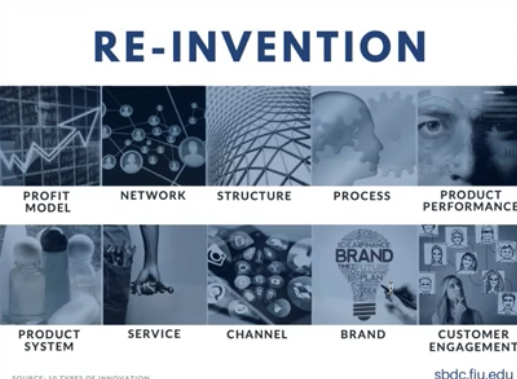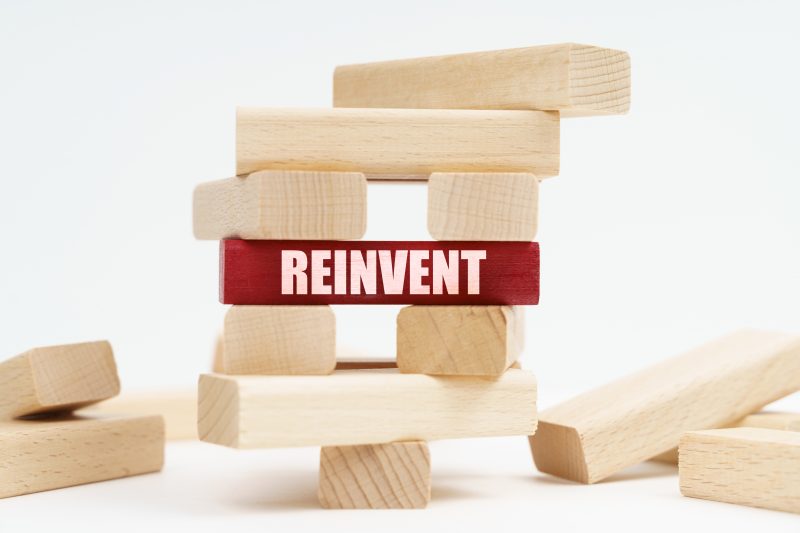Adriana Madrinan, a consultant at Florida SBDC at FIU who specializes in growth strategy, business models and innovation, said she started talking about reinvention at the beginning of the pandemic, and two years later “we are still talking about it.”
As an SBDC consultant, she still gets as many questions about pivoting as she did in 2020 and 2021. Pivoting will continue to be a part of your business, Madrinan says.
And here’s why: change is coming faster now as we are approaching the 4th Industrial Revolution in our economy.
She has clients who are well into the reimagination stage. They have resolved to make changes and did what they needed to do to keep the business afloat in the meantime. Then they made a plan to return the business to some semblance of normal. Some are still getting through this step because of the supply chain issues they experienced. But is it the best scenario for the “the new normal.” Probably not, that’s where reimagination comes in. There are proven ways to reach higher revenues: You can try to sell more to your current clients, you can increase prices, or you sell to a new audience. You can also reinvent what you sell, based on the new customer needs.

Because the world will continue moving fast and reinvention is part of the new normal, Madrinan presented the 7 steps to reinvent your business.
1. Understand the new environment. Look at the economy at large, and study your industry (including your competitors), your market and the trends in your industry. To understand your new environment, small businesses need to look at their new data. Try to understand the economy, your industry, your market and accelerating and emerging trends now. Then you look at the opportunities and threats for your business in this new environment.
2. Be aware of your customers’ new needs. They are probably not the same now as before the pandemic. They have new needs, new behaviors, new technologies and new expectations, she said. Go to your previous clients and ask them what their new needs are and how you can help them. If you are a B2B business, try to also understand your clients’ clients’ pains and gains and that will open you to a whole new world, Madrinan said.
3. Recognize your business’ capabilities – your strengths and your weaknesses. As you are thinking about what you can offer to your clients to meet their new needs, this is the moment to leverage your strengths and turn your weaknesses into strengths, she says.You need to get through these first three steps before you begin reimagining what your business should be.
4. Once you’re at this step, and this is a key step, identify the invention gap. By knowing your strengths and weaknesses as well as what your customers need now, you can look at what you can offer. Where to your your strengths and your customers’ new needs intersect? Developing strengths without a customer need is very common, but it is a waste of time. However, developing strengths where feasible where there is a customer need will not be, Madrinan says.

5. Rethink and rewrite a new value proposition. You need to write a new one for your new client needs — Why will your clients buy your products and services now?
6. Fine tune your reinvention. This is not a tweak – dig deep. There are 10 places where reinvention can take us to the other side, from rethinking your profit model, to operating efficiencies to improving your customer’s experience, to your branding. Here are the 10 ways:

7. Create an action plan – and execute. “If you don’t plan, you will never get to the right place,” says Madrinan. Make a 3-month, 6-month or 12-month plan. What are the 3 major tasks you really need to change to get to reinvention and put it into actions. What are three actions you need to do each month to get there? Ask what are you really good at and how can you leverage that? Is there a need for that? Not all ideas should be done.
And she added one more tip: take advantage of the resources that the community offers. Florida SBDC at FIU has 28 consultants with expertise in various areas standing ready to help you. There are other organizations too, such as Prospera and the Bayside Foundation.
“We have been given a second chance to create the best version of our business,” she says. “Let’s use it well.”
For more tips and tricks about reinvention, watch the SBDC at FIU webinar here.
Please send GrowBiz topic suggestions and feedback to GrowBiz@FIU.EDU.

